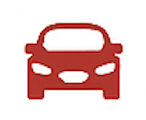Exploring the Rich Automotive Traditions and Trends in the Czech Republic
Škoda: The Backbone of Czech Automotive Identity
Škoda Auto is the centerpiece of Czech car culture and one of the oldest car manufacturers in the world, with its roots dating back to 1895 in Mladá Boleslav. Initially known as Laurin & Klement, the company became Škoda Auto in 1925 and has since become a household name across Europe. Today, it is a subsidiary of the Volkswagen Group, yet it retains a strong national identity and pride within the Czech Republic.
The brand's popularity in the domestic market is profound. Models such as the Octavia, Fabia, and Superb dominate Czech roads and enjoy high levels of trust among local consumers. Škoda cars are known for their practicality, reliability, and relatively low cost of ownership, making them appealing to a wide demographic. The company's manufacturing plants in the country not only supply the domestic market but also export vehicles to more than 100 countries.
In addition to being an economic pillar, Škoda plays a cultural role in the Czech Republic. Car shows, museums, and historical events dedicated to Škoda cars are common, and the brand is celebrated in both urban and rural areas. Enthusiasts collect vintage Škoda models and often participate in classic car rallies that pay tribute to the company's storied past.
Car Ownership and Driving Habits in Czech Society
Car ownership in the Czech Republic has increased significantly since the fall of communism, with private vehicle ownership now considered a standard part of daily life. As of the mid-2020s, the country has one of the highest rates of car ownership in Central Europe, with over 600 cars per 1,000 inhabitants. This marks a dramatic shift from the days when waiting years for a car allocation was the norm under state socialism.
Most Czechs own compact or midsize cars, and there's a strong preference for vehicles that are efficient and easy to maintain. Urban dwellers tend to favor hatchbacks and sedans due to limited parking space, while rural residents might opt for station wagons or SUVs to better handle countryside conditions. Despite a growing interest in electric vehicles, the uptake remains moderate, with internal combustion engines still dominating the roads.
Driving behavior in the Czech Republic reflects a blend of European norms and local attitudes. While traffic laws are strict and generally enforced, aggressive driving and speeding on highways can be common. Nonetheless, Czech drivers are typically well-trained, with a rigorous licensing process that includes both theoretical and practical exams. The country's network of motorways and well-maintained regional roads facilitates efficient travel, contributing to a car-centric lifestyle.
Motorsport and Tuning Enthusiasts
The Czech Republic has a passionate motorsport community that spans rallying, track racing, and motocross. Races such as the Barum Czech Rally Zlín, part of the FIA European Rally Championship, draw both local and international competitors. These events are well-attended and showcase not only the skill of Czech drivers but also the enthusiasm of fans who often line the rally stages in large numbers.
The country is also home to the Autodrom Most, a major racing circuit in northern Bohemia, which hosts touring car championships and other high-speed events. Motorsport clubs throughout the country provide access to grassroots-level racing and amateur competitions, helping to cultivate new talent and maintain interest in competitive driving.
Tuning culture is particularly popular among younger drivers. Modified Škoda and Volkswagen cars are commonly seen at local meetups and tuning shows. Enthusiasts invest in aesthetic and performance upgrades, often forming clubs and online communities to share tips and showcase their work. This scene emphasizes individuality and creativity, providing an outlet for automotive expression beyond mainstream consumer culture.
Classic Car Restoration and Vintage Enthusiasts
Classic car collecting and restoration enjoy a devoted following in the Czech Republic. Vintage Škoda models such as the 1000 MB and Felicia Cabrio are sought after by collectors who take great care in restoring these vehicles to their original glory. Restoration garages and spare parts dealers cater to this niche but active market, particularly in regions with strong historical ties to the automotive industry.
Numerous vintage car rallies and exhibitions are organized throughout the year, such as the Veteran Rallye Ostrava or the historical vehicle shows in Prague and Brno. These events often include period costumes and heritage parades, creating an immersive experience that celebrates the country's automotive history. Participants range from seasoned collectors to hobbyists who treat car restoration as both a craft and a cultural mission.
Public Opinion on Environmental Issues and Alternative Mobility
In recent years, the Czech public has shown growing awareness of environmental concerns related to car usage. Air quality in urban areas, especially Prague and Ostrava, has prompted discussions around reducing emissions and promoting sustainable transport. While many Czechs still rely heavily on personal vehicles, there is increasing support for eco-friendly initiatives such as low-emission zones and car-sharing programs.
The adoption of electric vehicles (EVs) is progressing slowly but steadily. Government incentives and EU-driven funding have helped expand the network of EV charging stations, particularly along major highways and in metropolitan areas. However, range anxiety, higher upfront costs, and limited local models remain barriers to widespread adoption. Hybrid vehicles have seen somewhat greater success due to their flexibility and lower fuel consumption.
Public transport continues to serve as a viable alternative in cities, but outside urban centers, car dependency remains strong. The national rail and bus systems are extensive, but they often lack the frequency and convenience of personal travel. As such, the car remains a cornerstone of Czech mobility, even as the conversation around sustainability gains momentum.
